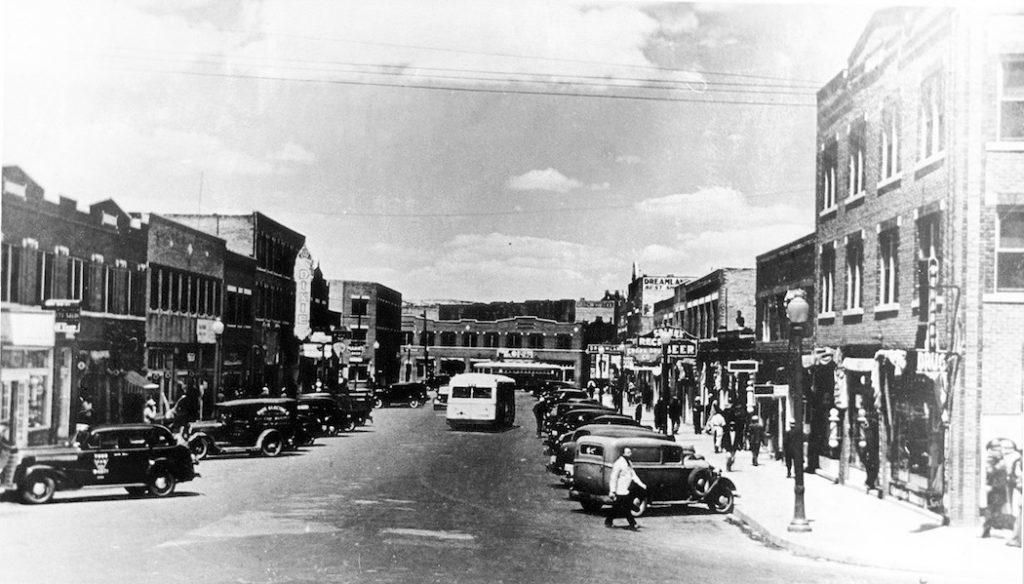Inside President Biden’s visit to Greenwood Cultural Center in Tulsa
Exclusive: theGrio was on the ground as President Joe Biden, administration officials and members of Congress gathered for the historic event marking 100 years since the Tulsa Race Massacre
Black Wall Street is “a physical location” that Michelle Brown-Burdex contends “may never exist again.” The program director of the Greenwood Cultural Center shared this insight into the lost affluent hub of Black America moments after sharing the history of the Tulsa Race Massacre with President Joe Biden.
Brown-Burdex explained that it is impossible for the Black enclave to rebuild to the stature that was Greenwood of the 1930s and 1940s.

“Black wall street today is an idea, a concept that can be duplicated and replicated across our country,” Brown-Burdex tells theGrio.
White prosperity was constructed over the 40 blocks of the Black wealthy enclave once known as the historic Greenwood district that was decimated in 1921 during a racial massacre and ravished after its restoration. What’s left now is half a block of the last standing Black-owned businesses, which rest beside a minor league baseball stadium, research facilities for Oklahoma State University and an interstate highway.
President Biden bore witness to the overpass that split Tulsa, and acknowledged what a similar highway construction did to his hometown of Wilmington, Delaware. The president said Interstate 95 split the town racially after Dr. Martin Luther King was assassinated.
Read More: Biden to announce billions for racial equity in housing during Tulsa visit
Angel Rich, founder and CEO of Credit Rich and the author of “The History of the Black Dollar” said by today’s calculations the monetary count for property lost in the Greenwood district in 1921 equates to $27 million.
Reverend Jesse Jackson, who was in attendance for the president’s remarks in Tulsa, said he is focused on the “content” of the president’s speech. The civil rights leader also offered repair needs to happen for the Black community by way of the same legislation that was recently passed by Congress addressing anti-Asian hate.
Various members of the Congressional Black Caucus also packed the cultural center, including U.S. Representatives Cori Bush, Sheila Jackson Lee, Hank Johnson, Barbara Lee, Brenda Lawerence and Lisa Blount-Rochester.

Rep. Lawrence of Michigan said of the CBC presence, “We show up. We fight for the rights and freedom of our people and the rights and freedom for this country.”
The day before the president’s address, the National Guard issued an apology to the survivors of the Tulsa Massacre. After Biden received his tour of the memorial wall for Black Wall Street in the Cultural Center, I asked if he would be making a presidential apology for the massacre.
He seemed to want to speak on the question, however, he was led away by Cedric Richmond, Biden administration senior advisor.
During the speech, President Biden highlighted that he is the first president in 100 years to come to Tulsa. He retold the horrific story to the crowd of untold bodies dumped in mass graves and the destruction of businesses in this destroyed community.
“This was not a riot, this was a massacre,” President Biden said. Those were strategic words that hinged on the insurance companies’ denial of claims filed by survivors. When the Black claimants tried to get payouts for the claims they were denied because the word “riot” at the time was used to characterize what had transpired.

Bident affirmed we can’t forget or be silent saying, “We do ourselves a disfavor as if this didn’t happen.” Biden also emphasized, “in silence wounds deepen.”
President Biden concluded his powerful speech by likening yesterday’s anniversary of the massacre to what is happening racially today — a rise of white supremacy witnessed as the Capitol came under attack on January 6, 2021, attacks on voting rights and the siege of Black wealth creation, homeownership and Black home appraisal rates.
Have you subscribed to theGrio’s “Dear Culture” podcast? Download our newest episodes now!
TheGrio is now on Apple TV, Amazon Fire and Roku. Download theGrio.com today!
More About:Politics

